In EJHS class, students are designing and building sensory toys for primary students
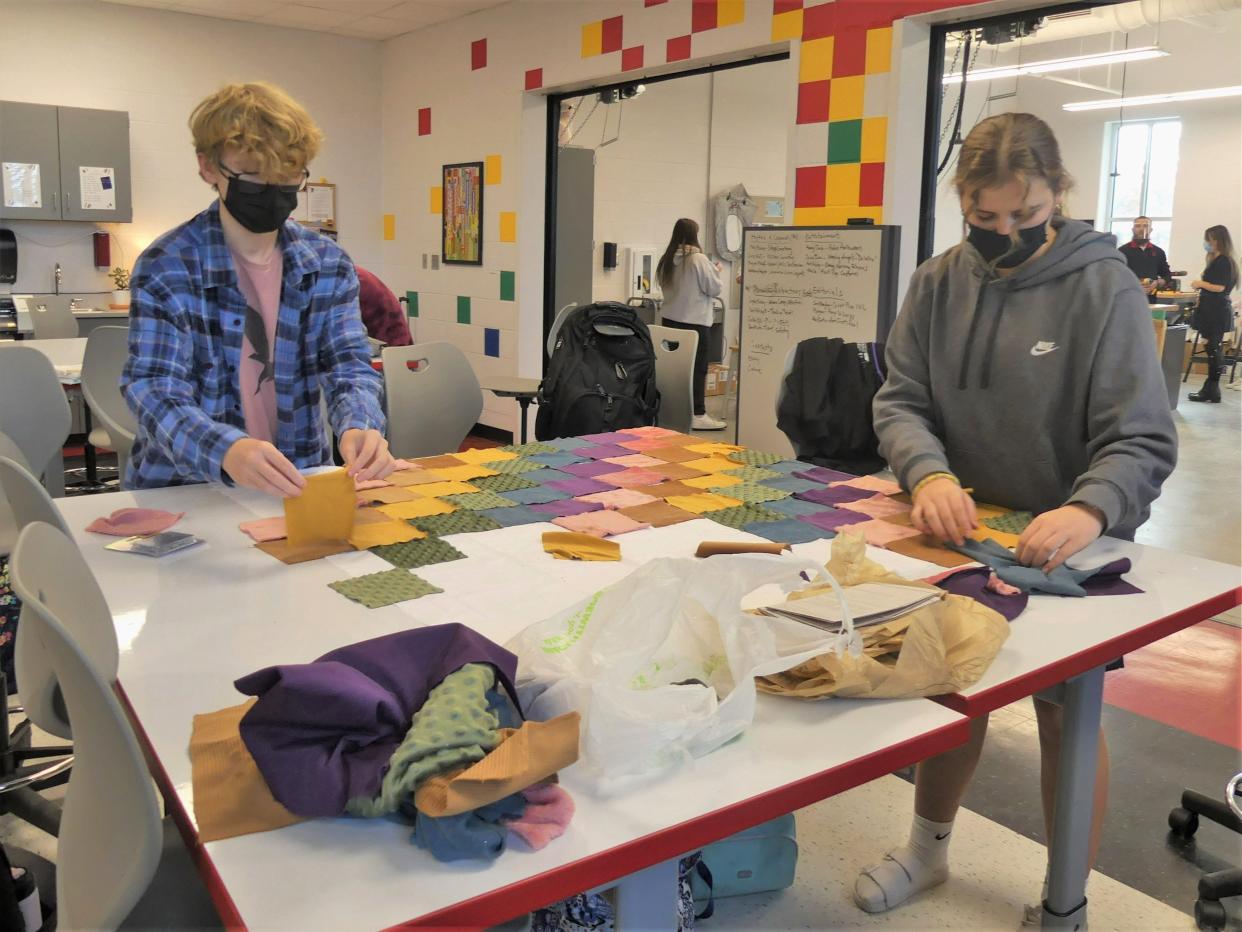
Standing at a table in Edgewood Junior High School’s new design lab on a recent Thursday, students stretched slime between their hands. A table over, a student carefully cut fabric squares. Another placed a ruler on a wooden frame, making precise marks with a pencil.
It was a typical work day for the eighth graders in Brian Gallagher’s LAUNCH Design Engineering class, a new elective at EJHS where students use the LAUNCH cycle, created by A.J. Juliani and John Spencer. It’s a student-friendly engineering design process that can be applied to a variety of projects and situations, Gallagher said. Students do the following: Look, listen and learn; Ask tons of questions; Understand the process or problem; Navigate potential solutions; Create a prototype; then Highlight and fix.
Over the course of the semester, students have gotten more familiar with that process, which led up to their choice project. They chose a problem in the community that they cared about, then were given the time and tools to help solve it. One group of eighth graders is working on designing and building sensory toys for students in a life skills class, a classroom with students who have moderate to severe needs, at Edgewood Primary School.
COVID-19 school dashboard: MCCSC, R-BB reporting new cases
“I feel like what I'm making isn't just for school,” said Kinsey Rose, an eighth grader. “It's important for other people, which makes me want to do it more.”
That’s one of the main reasons Gallagher created his elective course. He said over the past few years, teachers have done a lot of project-based learning training, but said it’s sometimes difficult as a math teacher to find meaningful projects to incorporate into the curriculum. This elective, for which he has two sections, gives him the opportunity to do that. Students still use math, but also learn employability skills.
“We just want to give kids opportunities to develop those skills while actually doing something that they feel like is meaningful,” Gallagher said.
In the first quarter of the year, students got to learn about the LAUNCH process through individual and small group projects. With this bigger choice project, they started with the first step of the cycle to look, listen and learn about different problems people are experiencing that they could help with.
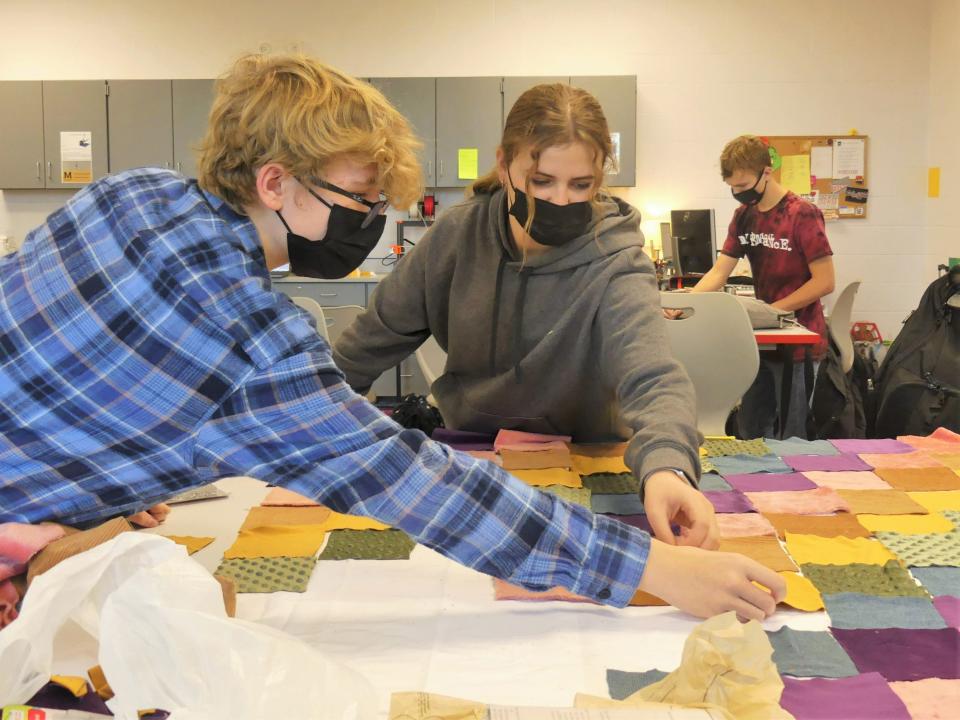
“It’s kind of given them a little more empathy,” Gallagher said. “I really tried to get them to identify issues that they were concerned with, that they were interested in, so that the next month of working on this stuff was engaging, so they didn't feel like it was something that they had to do but something that they get to do.”
Gallagher said his students came up with ideas and he shared some he knew of, too. He said he knew from Meighan Scott, Ready Schools coordinator, that Stacy Pie, a teacher for a life skills class at EPS, needed more sensory items for students. He shared that issue with the class and when it came time for students to choose what to work on, many selected it as their focus.
MCCSC buses: More than 30 drivers have quit since August; staffing 'woefully inadequate'
One of those students was eighth grader Gabriel Campbell.
“It sounded like it would help people the most,” Gabriel said.
During a recent class, Gabriel and Ava Norton worked toward creating a weighted stuffed animal with different textures. They’re also considering adding a component that makes noise. They cut out pieces of fabric and laid them out in a pattern.
There are many sensory items being made by small groups of students, like sensory bags, buttons that light up or a frame that will have twine or nylon from one end to the other with beads strung across that students can move.
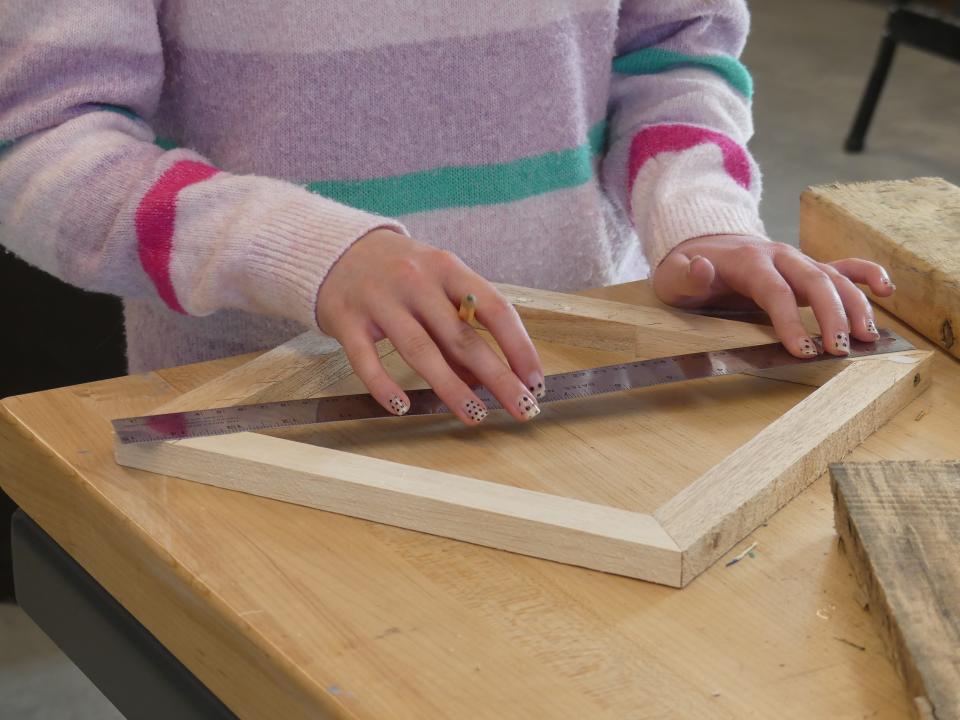
“You get to have your own freedom and pick and choose what you want to do, which is really nice because it's not common in other classes,” Ava said.
Though students are now in the middle or nearing the end of the LAUNCH process, a few weeks ago they had the chance to visit EPS to talk with Pie and meet some of her students.
Pie said many of her students are nonverbal. Some are in wheelchairs or are fully or partially paralyzed.
“It's hard to find toys for these kids that are appropriate that they can actually play with and understand,” Pie said. “And when we do find those toys, they're usually out of the school budget.”
Some students have low muscle tone, so picking things up can be hard for them, Pie said. The EJHS students are focused on creating toys that are actually usable and functional, so during their visit, they asked Pie about what needs and preferences her students have.
Get involved: Big Brothers Big Sisters of South Central Indiana seeks mentors for more than 140 children
Ava said she and other students asked about daily challenges the students face, what kind of things they’re learning and what some of their favorite textures are. They also asked Pie if there would be a specific storage unit the toys should be able to fit into.
“The questions that they asked were just amazing,” Pie said. “You could tell that they really put a lot of thought into this.”
Not only did they have knowledge from the school visit, but they also did their own research into what kind of sensory items are already out there and what things are better for students with specific disabilities, Gallagher said.
Addison Henkel, an eighth grader, said after she and her peers were able to talk to Pie and some students, they worked to make an outline of what they wanted to do. Addison said she sketched out her idea for a weighted stuffed animal, but other students used Tinkercad, an online 3D modeling program, to make plans. Once they got into the design lab, they knew exactly what they needed to do.
“I think it puts a good weight on your shoulders because you want to do a good job because it is for your community — it's not just for yourself, it's for other people,” Addison said. “It definitely taught me a lot about how to deal with other people and how to deal with when problems arise and stuff like that. I learned how to fix them quickly because we do have deadlines for a lot of what we do.”
Kinsey is working with a group to create clear, silicone sensory bags that can’t be punctured. They’re filling the bags with colored rice, glitter, slime and beads for texture, then sealing them. Users will be able to see through the bags and run their fingers over them. Students said they liked different textures, Kinsey said.
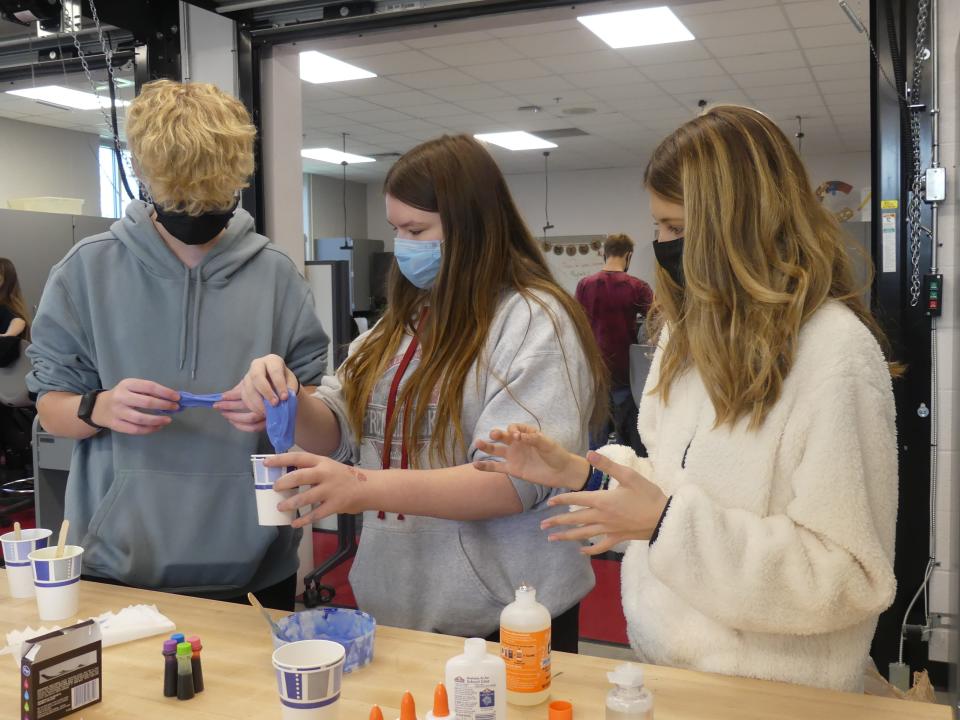
“My favorite part was probably talking to the children because it was so fun. They were running around and we got to see them and see what specifically would work for them,” Kinsey said. “And also building, because that’s the fun part.”
The group also plans to put small objects in the bags. Kinsey said meeting the children allowed them to be able to personalize what items go in the bags based on what the students like, such as small toy cars. But they also plan to include letters or numbers to help them learn.
“We wanted to think of something that was fun, but also a little bit educational at the same time,” Kinsey said.
Throughout the class period, students went back and forth from the “clean” side of the lab to the “messy” side as needed. The “messy” side is for construction, and is equipped with workbenches and tools including a drill press, sander and planer that students can receive certifications in operating. On the “clean” side are 3D printers and collaborative planning stations. The tabletops are whiteboards that can flip down for the whiteboard to stand in a traditional upright position. They also have wheels to easily be moved around.
And the lab isn’t just for engineering classes. Science classes have utilized the space to research the roles of theme park engineers and develop a prototype for an upgraded carnival ride, Scott said, using principles of motion and air pressure, mechanical movement and the forces of gravity and friction. Social studies students are designing and creating period replicas from Ancient Greek and Roman civilizations, and English and language arts students are basing a project off of the Roald Dahl novel they’re reading to create sanitary candy dispensers for student use.
“You do not need to be in a STEM class in order to do STEM-based instruction,” Scott said. “That’s kind of the approach that we're trying to go for around here.”
Aside from the sensory items, Gallagher's students are also tackling problems like building outdoor seating for students and storage solutions for the lab. The space has already proved to be a source of inspiration.
“They have really impressed me with their creativity and the ideas that they throw out that I don't think they would have had or thought were possible without the space, like if we were just using normal classroom materials and classroom workspace,” Gallagher said.
Students are working to finish projects before the end of the semester. Then they will “launch” them to their client or audience, Gallagher said. Pie said the students have been sharing their design plans with her as they go.
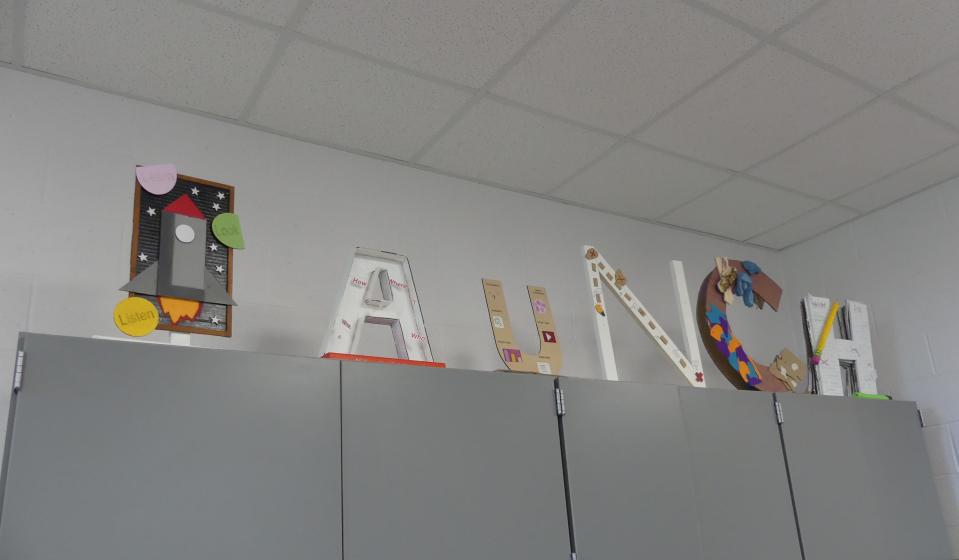
“It is amazing with these kids the things that we talked about that they were able to pick up on and come up with ideas that I would have never thought of,” Pie said. “It's just amazing and they've accepted my kids really well.”
The students creating sensory toys plan to bring them over to EPS and hope to be able to spend more time at the school to see the students get use out of them.
Addison has two favorite parts of the project — “being able to create what I’ve made and see it come to life, and then seeing the kids' reactions to what happened because you want them to be happy and excited,” she said. “So to me, that's one of the most rewarding things: At the end of this, you do all of this work and you get to see what they like.”
Scott and Gallagher said since these choice projects require funding to cover expenses, they are developing a website where the community can view the projects and students can share their project needs through video requests or wish lists, to ask community members to donate materials, order items or donate time to help students learn more about the tools available to them in the lab.
Area residents can keep an eye on the district’s website, rbbschools.net, and contact Scott, mscott@rbbschools.net, or Gallagher, bgallagher@rbbschools.net, to get involved in sharing skills, ideas, materials or donations with the class.
This article originally appeared on The Herald-Times: Edgewood students solve community problems through design engineering

